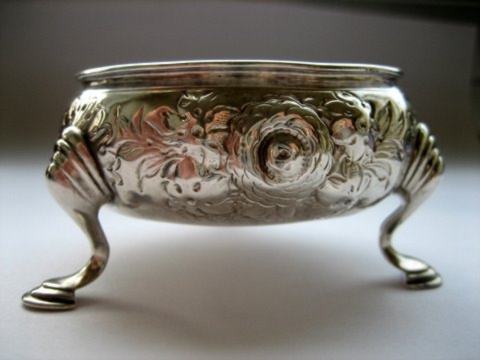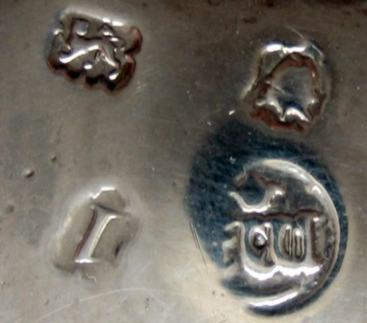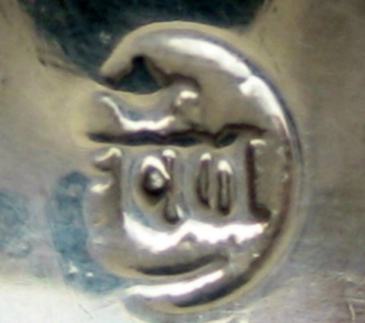 ASSOCIATION OF SMALL COLLECTORS OF ANTIQUE SILVER
ASSOCIATION OF SMALL COLLECTORS OF ANTIQUE SILVERASCAS
| Members' Window # 46 |
|
click on images to enlargeAN "EARLY GEORGIAN" SALT CELLARThe round Rococo (note 2) style salt cellar is raised on three hoofed feet. The circumference is embellished with repousse work of roses and leaves. The salt is lacking its glass liner (inner gilding is absent) and a small hole is present in the center of a rose. It measures 69 mm in diameter, stands 39 mm tall and weighs 52 grams. The bottom is hallmarked with the lion passant guardant (note 3) for sterling silver, crowned leopardís head for the Guild mark of London and date letter " l " in old English showing that it was hallmarked in London 1746. The salt cellar is engraved on the bottom with the initials D over G.M. The makerís mark "EW with a crown above and a crescent below" (note 4) punched on the bottom is actually that of Edward Wood, (no relation to Samuel Wood). He is registered as being a specialist salt cellar maker. A research made about him states "no one in London in the mid 18th century made more salt cellars" (from Grimwade, London Goldsmiths 1697-1837: Their marks and Lives, page 709). This mark was entered in 1740 while an earlier mark was entered in 1722. Samuel Wood was master to David Hennell and died 1752. ENDNOTES
|
Robert Massart
|


